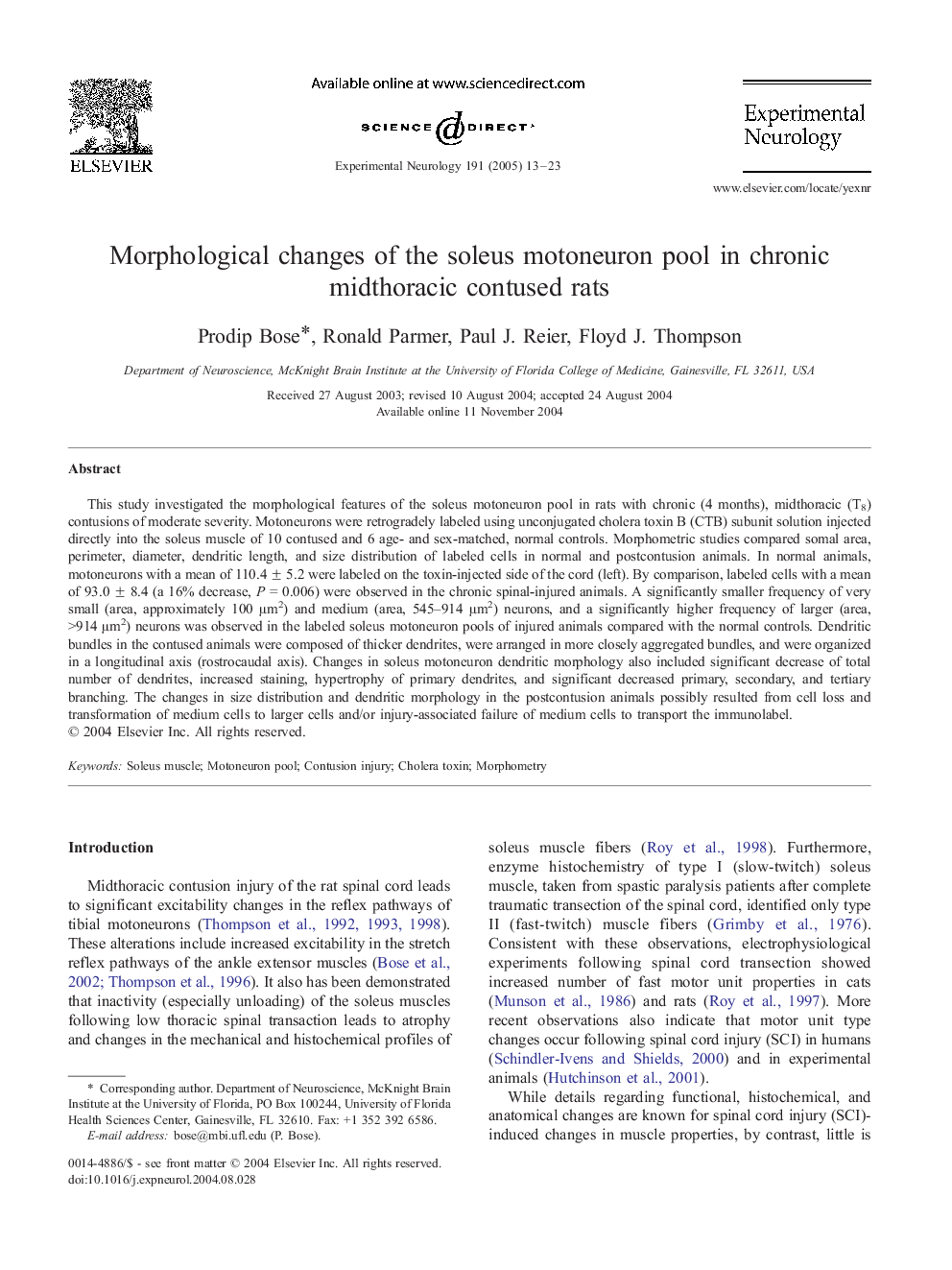| Article ID | Journal | Published Year | Pages | File Type |
|---|---|---|---|---|
| 9192129 | Experimental Neurology | 2005 | 11 Pages |
Abstract
This study investigated the morphological features of the soleus motoneuron pool in rats with chronic (4 months), midthoracic (T8) contusions of moderate severity. Motoneurons were retrogradely labeled using unconjugated cholera toxin B (CTB) subunit solution injected directly into the soleus muscle of 10 contused and 6 age- and sex-matched, normal controls. Morphometric studies compared somal area, perimeter, diameter, dendritic length, and size distribution of labeled cells in normal and postcontusion animals. In normal animals, motoneurons with a mean of 110.4 ± 5.2 were labeled on the toxin-injected side of the cord (left). By comparison, labeled cells with a mean of 93.0 ± 8.4 (a 16% decrease, P = 0.006) were observed in the chronic spinal-injured animals. A significantly smaller frequency of very small (area, approximately 100 μm2) and medium (area, 545-914 μm2) neurons, and a significantly higher frequency of larger (area, >914 μm2) neurons was observed in the labeled soleus motoneuron pools of injured animals compared with the normal controls. Dendritic bundles in the contused animals were composed of thicker dendrites, were arranged in more closely aggregated bundles, and were organized in a longitudinal axis (rostrocaudal axis). Changes in soleus motoneuron dendritic morphology also included significant decrease of total number of dendrites, increased staining, hypertrophy of primary dendrites, and significant decreased primary, secondary, and tertiary branching. The changes in size distribution and dendritic morphology in the postcontusion animals possibly resulted from cell loss and transformation of medium cells to larger cells and/or injury-associated failure of medium cells to transport the immunolabel.
Related Topics
Life Sciences
Neuroscience
Neurology
Authors
Prodip Bose, Ronald Parmer, Paul J. Reier, Floyd J. Thompson,
